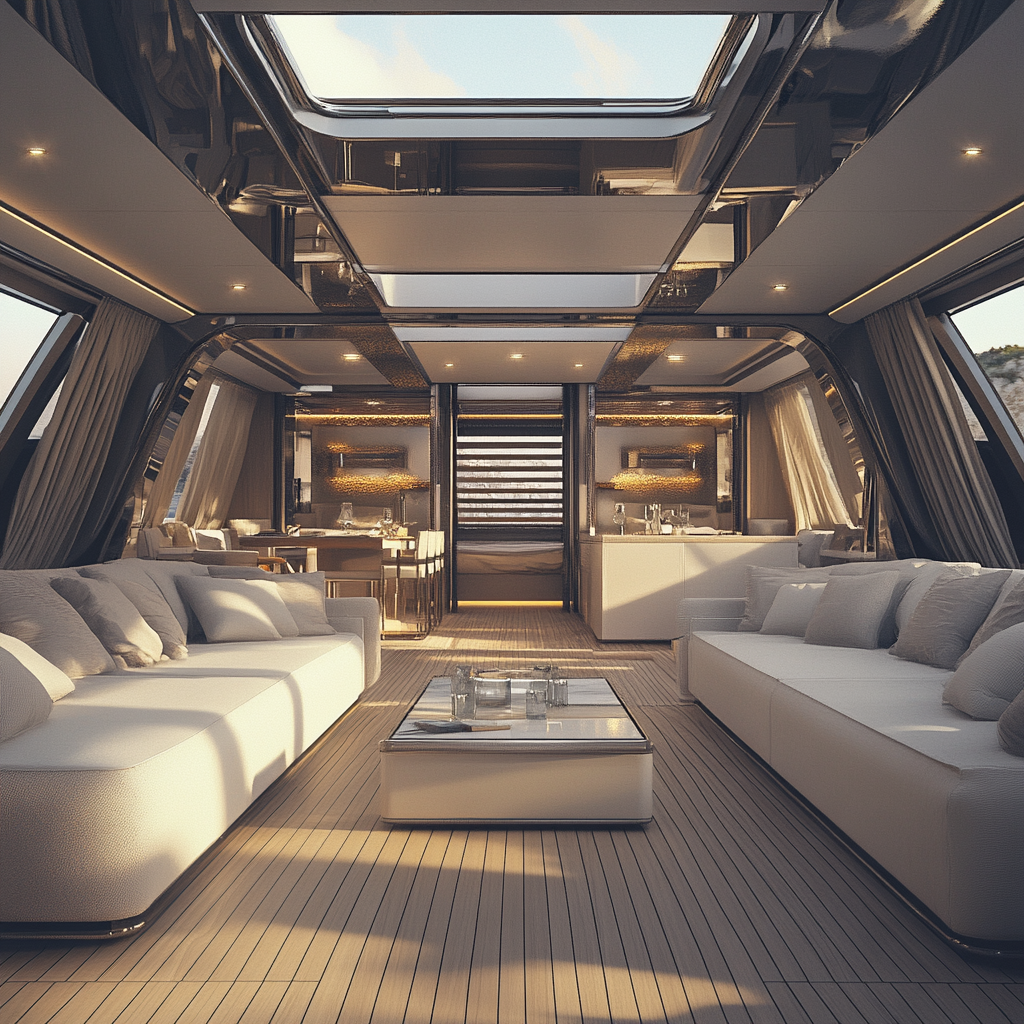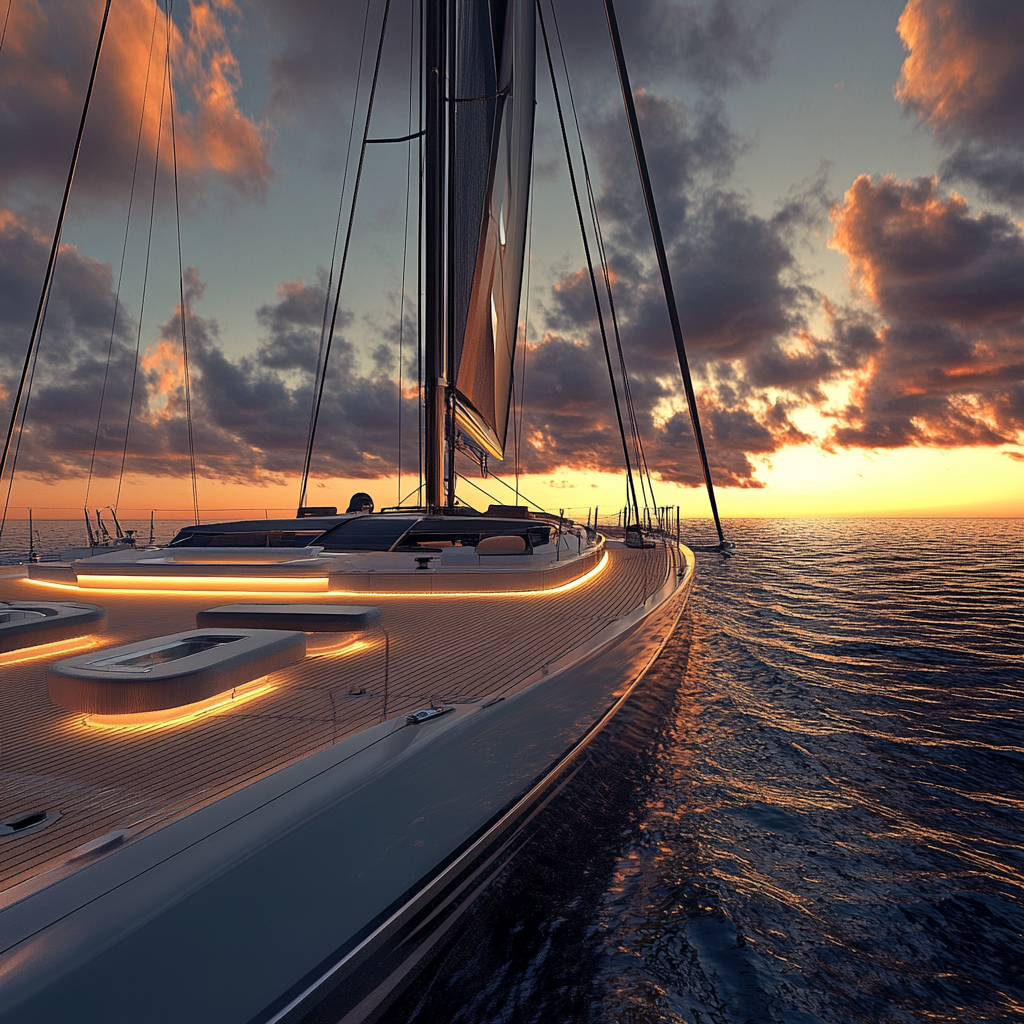Harnessing 3D Visualizations to Overcome Challenges in Yacht Design and Manufacturing
The design and manufacturing of yachts and sailboats are complex endeavors that require the integration of advanced engineering, exquisite design, and stringent regulatory compliance. As yacht manufacturers strive to meet the growing demands for customization, efficiency, and luxury, they face numerous challenges. 3D visualization has emerged as a powerful tool that addresses many of these issues, transforming the way yachts are designed, built, and sold. This article explores the specific challenges in yacht manufacturing and how 3D visualizations provide solutions to these challenges.
Challenges in Yacht Design and Manufacturing
Complexity of Design and Engineering
Customization Requirements: Yacht clients often desire highly customized designs that reflect their personal tastes and preferences. This customization can range from unique hull shapes to intricate interior layouts. Creating bespoke designs requires a high level of detail and accuracy.
Integration of Systems: Yachts are complex machines that incorporate numerous systems, including propulsion, navigation, HVAC, and entertainment. Integrating these systems seamlessly into the design without compromising aesthetics or functionality is a significant challenge.
Hydrodynamic and Aerodynamic Efficiency: Achieving optimal performance requires careful consideration of hydrodynamic and aerodynamic properties. Small changes in the design can have substantial impacts on speed, stability, and fuel efficiency.
Communication and Collaboration
Stakeholder Alignment: Yacht design and manufacturing involve multiple stakeholders, including designers, engineers, clients, and regulatory bodies. Ensuring that all parties have a shared understanding of the design is crucial to avoid miscommunications and costly reworks.
Technical Complexity: Conveying the technical aspects of yacht design to clients, who may not have a technical background, can be challenging. Traditional blueprints and CAD drawings can be difficult for clients to interpret.
Spatial Planning and Ergonomics
Limited Physical Prototyping: Building physical prototypes or full-scale models of yachts is often impractical due to the cost and time involved. However, understanding spatial relationships and ergonomics is essential to ensure comfort and functionality.
Maximizing Usable Space: Yacht interiors must be designed to maximize the use of available space while providing comfort and luxury. This requires careful planning of every square inch, from cabins to storage spaces.
Design Validation and Iteration
Late-stage Design Changes: Identifying design flaws or client-requested changes late in the development process can result in significant delays and increased costs.
Testing and Compliance: Yachts must adhere to stringent safety and environmental regulations. Testing designs for compliance with these regulations traditionally involves time-consuming and costly physical tests.
Cost and Resource Management
Material Costs: Yachts use high-quality materials, which can be expensive. Optimizing material use without compromising quality is essential to manage costs.
Waste Reduction: Inefficient design processes can lead to material waste and increased production costs.
Marketing and Sales
Conveying the Design to Clients: Selling a yacht requires convincing clients of the value and uniqueness of the design. Traditional 2D drawings and static images often fall short in capturing the essence of a luxury yacht.
Differentiating in a Competitive Market: The yacht market is highly competitive, with numerous manufacturers vying for the attention of a discerning clientele. Providing a compelling visual experience can be a key differentiator.
Solutions Offered by 3D Visualizations
Enhanced Design and Engineering Precision
Detailed 3D Modeling: 3D visualizations allow designers to create highly detailed models of both the exterior and interior of a yacht. These models can capture the intricacies of custom features, from hull shapes to intricate interior details.
System Integration Visualization: By incorporating all onboard systems into a single 3D model, designers can better visualize and plan the integration of propulsion, electrical, and HVAC systems, ensuring that they fit within the design parameters without conflicts.
Performance Simulations: 3D models can be used to simulate hydrodynamic and aerodynamic performance, allowing designers to make data-driven decisions that enhance speed, stability, and efficiency before building physical prototypes.
Improved Communication and Collaboration
Interactive 3D Models: 3D visualizations provide a common platform for all stakeholders to interact with the design. Clients can explore the yacht’s features, providing feedback in real-time, which helps ensure that the final product meets their expectations.
Virtual Reality (VR) and Augmented Reality (AR): VR and AR applications allow clients and stakeholders to experience the yacht in an immersive environment. This interactive experience makes it easier for clients to understand the design and make informed decisions.
Design Reviews and Collaboration Tools: 3D models can be shared with teams across different locations, facilitating collaborative design reviews and reducing the need for physical meetings.
Spatial Planning and Ergonomics
Virtual Walkthroughs: 3D visualizations allow designers and clients to virtually walk through the yacht’s interior. This helps in understanding spatial relationships, ensuring that the layout is both functional and comfortable.
Ergonomic Testing: Virtual models can simulate how people will interact with the space, allowing designers to identify and address ergonomic issues before construction begins. This includes ensuring sufficient headroom, optimizing seating arrangements, and ensuring ease of movement within the yacht.
Design Validation and Iteration
Early Detection of Design Flaws: 3D visualizations enable designers to identify potential issues early in the design process. By simulating various scenarios, such as different sea conditions, designers can ensure that the yacht performs as expected.
Regulatory Compliance Simulation: Advanced 3D modeling software can simulate safety and environmental tests, helping designers ensure compliance with international regulations before physical testing. This reduces the time and cost associated with achieving regulatory approval.
Efficient Iteration: Changes to the design can be made quickly and visualized immediately, allowing for rapid iteration. This flexibility enables designers to explore multiple design options and make informed decisions based on client feedback.
Cost and Resource Optimization
Accurate Material Estimation: 3D models provide precise measurements, enabling accurate estimation of material requirements. This reduces waste and helps manage costs effectively.
Optimization for Production: By visualizing the yacht in 3D, manufacturers can identify the most efficient ways to assemble and construct the vessel, reducing production time and labor costs.
Virtual Prototyping: Virtual prototypes reduce the need for costly physical models, allowing designers to experiment with different materials and construction methods digitally.
Enhanced Marketing and Sales
Compelling Visual Experiences: High-resolution 3D renderings and animations create stunning visuals that can be used in marketing materials. These visuals provide clients with a realistic and detailed view of the yacht, helping them visualize the final product.
Interactive Client Engagement: 3D visualizations can be integrated into sales presentations, allowing clients to explore the yacht’s features interactively. This immersive experience can be a powerful tool in convincing clients of the yacht’s value.
Customization Tools: Manufacturers can use 3D visualization software to provide clients with customization tools, enabling them to choose finishes, materials, and layouts. This personalized experience enhances client satisfaction and engagement.
Case Studies and Applications
Elan Yachts: This yacht manufacturer uses 3D visualization to create virtual tours of their yachts, allowing clients to explore different layouts and design options. This has streamlined the design process and enhanced client engagement.
Oceanco: By integrating 3D visualizations and VR into their design process, Oceanco has improved collaboration between designers, engineers, and clients. This has resulted in more efficient design iterations and reduced lead times.
Heesen Yachts: Heesen uses 3D visualization to simulate the performance of their yachts, optimizing hull shapes for better efficiency and comfort. This has allowed them to produce yachts that meet high-performance standards while maintaining luxury aesthetics.
Future Perspectives
As technology continues to advance, the integration of AI and machine learning with 3D visualization tools is expected to further revolutionize yacht design and manufacturing. AI can assist in optimizing design elements based on a vast array of data inputs, while machine learning algorithms can predict performance outcomes more accurately. Additionally, the use of AR and VR is likely to become more widespread, offering even more immersive and interactive experiences for clients.
3D visualization is a transformative tool in the yacht and sailboat industry, addressing many of the key challenges in design, manufacturing, and sales. By providing a platform for precise, efficient, and collaborative design processes, 3D visualizations enhance the quality of the final product while reducing costs and time to market. For manufacturers and clients alike, this technology offers a new level of clarity, customization, and engagement, ensuring that the yacht-building experience is as luxurious and refined as the vessels themselves.
Contact
Let's create something amazing together
Agencija Klicaj, d.o.o.
Dolenja vas pri Polhovem Gradcu 22, 1355 Polhov Gradec
VAT: SI72363355
info@klicaj.si


